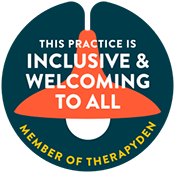Getting a good night’s sleep is essential for both mental and physical health. However, many people struggle with falling asleep, staying asleep, or waking up feeling unrefreshed. Cognitive Behavioral Therapy for Insomnia (CBT-I) is an evidence-based approach that can help address sleep issues by changing negative thoughts and behaviors associated with sleep. In this post, we’ll explore how CBT techniques can improve your sleep and help you wake up feeling rested and rejuvenated.
Understanding Sleep Problems
Sleep issues can arise for a variety of reasons, including stress, anxiety, poor sleep habits, and medical conditions. Insomnia, one of the most common sleep disorders, affects millions of people and can lead to significant distress. Common symptoms include:
Difficulty falling asleep
Waking up frequently during the night
Waking up too early and being unable to return to sleep
Feeling tired during the day despite adequate time in bed
While sleep medications may offer temporary relief, they do not address the root causes of sleep difficulties. This is where CBT-I comes in as a highly effective and lasting solution.
The Basics of CBT-I
CBT-I is a structured, evidence-based therapy designed to identify and modify behaviors and thoughts that interfere with sleep. It consists of several key components:
Cognitive Restructuring
Stimulus Control Therapy
Sleep Restriction Therapy
Relaxation Techniques
Sleep Hygiene Improvement
Let’s explore each of these techniques in detail and how they can improve your sleep.
1. Cognitive Restructuring: Changing Negative Sleep Thoughts
Many people with insomnia develop negative or anxiety-inducing thoughts about sleep, which can perpetuate the problem. Cognitive restructuring involves identifying and challenging these unhelpful thoughts. For example:
Negative Thought: “I’ll never be able to sleep tonight, and tomorrow will be a disaster.”
Alternative Thought: “Even if I don’t sleep well, I can still get through the day. My body knows how to rest.”
By challenging catastrophic thinking and replacing it with more balanced beliefs, you can reduce anxiety and create a healthier mindset about sleep.
2. Stimulus Control Therapy: Strengthening the Bed-Sleep Association
Many people with insomnia spend a lot of time in bed awake, leading their brains to associate the bed with frustration rather than sleep. Stimulus control therapy helps reestablish the bed as a cue for sleep:
Only go to bed when you’re sleepy.
Get out of bed if you’ve been awake for more than 20 minutes.
Use the bed only for sleep and intimacy—no work, TV, or social media.
Wake up at the same time every morning, regardless of sleep duration.
By following these principles, your brain will relearn that the bed is a place for sleep, not wakefulness.
3. Sleep Restriction Therapy: Enhancing Sleep Efficiency
Spending excessive time in bed awake can lead to fragmented sleep. Sleep restriction therapy involves temporarily limiting the amount of time spent in bed to increase sleep efficiency:
Determine your average sleep time by tracking sleep for a week.
Set a strict sleep schedule based on your actual sleep duration.
Gradually increase sleep time as sleep efficiency improves.
This approach may initially lead to sleep deprivation, but over time, it helps consolidate sleep and reduce nighttime awakenings.
4. Relaxation Techniques: Calming the Mind and Body
Stress and anxiety can interfere with sleep, making relaxation techniques an essential part of CBT-I. Some effective methods include:
Progressive Muscle Relaxation (PMR): Systematically tensing and relaxing different muscle groups.
Deep Breathing Exercises: Practicing slow, diaphragmatic breathing to activate the body’s relaxation response.
Mindfulness Meditation: Focusing on the present moment to reduce stress and promote relaxation.
Guided Imagery: Visualizing calming scenes to ease into sleep.
Practicing these techniques regularly can help lower pre-sleep arousal and make it easier to drift off.
5. Sleep Hygiene: Creating a Sleep-Friendly Environment
Good sleep hygiene plays a crucial role in supporting healthy sleep patterns. Here are some essential sleep hygiene tips:
Maintain a Consistent Sleep Schedule: Go to bed and wake up at the same time every day, even on weekends.
Optimize Your Sleep Environment: Keep your bedroom cool, dark, and quiet. Use blackout curtains and white noise machines if needed.
Limit Stimulants: Avoid caffeine, nicotine, and alcohol close to bedtime.
Reduce Screen Time: Minimize exposure to blue light from screens at least an hour before bed.
Exercise Regularly: Engage in physical activity, but avoid vigorous workouts too close to bedtime.
By following these practices, you can create an environment that supports restful sleep.
Implementing CBT-I: A Step-by-Step Approach
If you’re ready to improve your sleep with CBT-I techniques, here’s a step-by-step approach to get started:
Keep a Sleep Diary: Track your sleep patterns, bedtime routines, and sleep quality for one to two weeks.
Identify Negative Sleep Thoughts: Write down and challenge any unhelpful thoughts related to sleep.
Implement Stimulus Control Strategies: Establish a strong connection between your bed and sleep.
Adjust Your Sleep Schedule: If needed, use sleep restriction therapy to enhance sleep efficiency.
Incorporate Relaxation Techniques: Practice deep breathing, meditation, or PMR before bed.
Improve Sleep Hygiene: Make necessary adjustments to your bedtime routine and sleep environment.
Stay Consistent: Behavioral changes take time, so be patient and stick with the strategies.
When to Seek Professional Help
If you’ve tried implementing CBT-I techniques but continue to struggle with sleep, consider seeking professional guidance. A licensed therapist specializing in CBT-I can help tailor strategies to your specific needs and address any underlying issues contributing to sleep disturbances.
Conclusion
Improving sleep with CBT skills is a powerful way to transform your nights and enhance overall well-being. By addressing negative sleep thoughts, implementing behavioral strategies, and optimizing sleep hygiene, you can achieve more restful and restorative sleep without relying on medication. Start incorporating these CBT techniques today, and take the first step toward better sleep and a healthier life.




